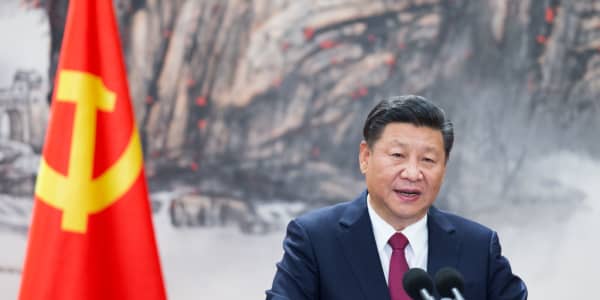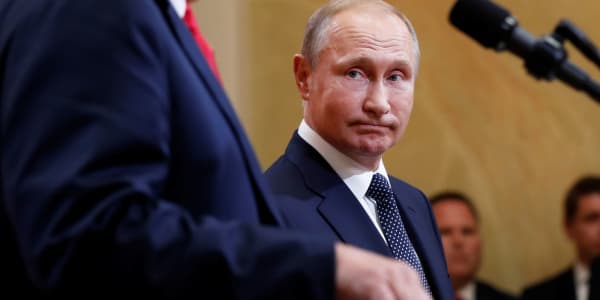Saudi Arabia's first foray into the international bond market appears to be going well as the books get set to close on what could be a $15-20 billion deal.
The debt offering is expected to debut this week and is a key part of the kingdom's economic reform plan as it would give Saudi Arabia a sovereign benchmark that would help it open its capital markets for future offerings, such as corporate issues.
Saudi Arabian officials have been on a road show for the multi-tranche dollar offering since last week, and they met with investors in New York on Tuesday. According to price talk, the Saudi five-year note would tentatively come to market with a yield 160 basis points above the U.S. five-year Treasury note. The 10-year would tentatively be set at 185 bps above the U.S. 10-year, and the 30-year would be 235 bps above the U.S. long bond.

Strained by low oil prices, Saudi would use the proceeds for operating expenses. While far richer than other producers, the kingdom has been running a deficit and has been forced to take painful cost-cutting measures, such as trimming and paring wages for public workers and ministers. The deficit in 2015 was nearly $100 billion.
The kingdom has targeted balancing its budget by 2020, and it has been reducing expenses in a country where subsidies have been heavily used. The Saudi population is young, with half of all Saudis younger than 25, and it's a country where there are not enough private sector jobs for workers entering the labor force.
"It'd be ambitious to close the gap by 2020. But they can reduce it drastically in coming years. They've been implementing many different measures, such as reducing water and energy subsidies and introducing VAT in 2018. They are likely to be partially successful in implementing their medium-term program, which should stabilize credit fundamentals," said Jerome Audran, emerging market analyst at UBS Wealth Management.
Saudi Arabia's "Vision 2030" economic reform plan, orchestrated by Deputy Crown Prince Mohammed bin Salman, is an effort to transform the Saudi economy into a much more diversified one, less dependent on oil revenues. Petroleum now accounts for 75 percent of its revenues, and bin Salman has proposed developing other industries, such as mining, finance and technology.
As part of the plan, shares are expected to be floated in state oil company Saudi Aramco to help the country build a large sovereign wealth fund. Investors were told the Saudi fund would begin to pay a dividend to the government.
Officials told investors of plans for a new "sin" tax on tobacco, and one investor said it could also include power drinks.
The investor described the Saudi comments as fairly candid for a country that has been viewed as not very transparent and ultra-conservative. During the road show, Saudi officials discussed their budget balancing goal, which they believe they could meet with oil prices in the current range.
"They did say they are considering the political impact of everything they do, including their ability to meet the 2020 budget target," said one investor. "They said they could balance the budget next year but the societal cost would be too great. They've taken into account political and societal costs."
That could change if the price of oil becomes more volatile again. Saudi Arabia and other members of OPEC have been trying to work out an agreement with non-OPEC producers on an output deal, in an effort to steady the price of oil. Just the talks alone have helped push oil prices over $50 a barrel.
Audran said the Saudis have been depleting foreign exchange reserves at a pace of more than $9 billion a month as of July, and it is realistic for the kingdom to use the bond for operating expenses instead of FX reserves. FX reserves started to decline in January of 2015, not long after OPEC embarked on a policy of letting the market set oil prices, a plan that resulted in plummeting crude prices. The kingdom's foreign exchange reserves stand at about $550 billion.
Even without an agreement among oil producers, the oil market is already in the process of rebalancing and analysts mostly expect higher prices next year.
"I think the debt deal is a key policy priority," said Helima Croft, head of global commodities strategy at RBC. "Borrowing gives them a little more breathing room on their foreign exchange reserves. If they keep draining their FX reserves, people will question the Saudis' ability to maintain the currency peg."
More from Global Investing Hot Spots:
The hottest spot on Earth has a melting economy
Saudi Arabia finds a new, $15 billion way to battle oil cash crunch
Op-Ed: How the Middle East can recover from the oil crunch





